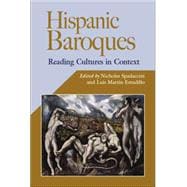
| Introduction : the Baroque and the cultures of crises | |
| On the notion of a melancholic Baroque | p. 3 |
| Aesthetic categories as empire administration imperatives : the case of the Baroque | p. 20 |
| Of Baroque holes and Baroque folds | p. 55 |
| Models of subjectivity in the Spanish Baroque : Quevedo and Gracian | p. 72 |
| Horror (Vacui) : the Baroque condition | p. 87 |
| From hieroglyphic presence to representational sign : an other point of view in the Auto Sacramental | p. 107 |
| The challenges of freedom : social reflexivity in the seventeenth-century Spanish literary field | p. 137 |
| Revisiting the culture of the Baroque : nobility, city, and post-Cervantine novella | p. 162 |
| Perspectives on Mestizaje in the early Baroque : Inca Garcilaso and Cervantes | p. 187 |
| Freedom and containment in colonial theology : Sor Juana's Carta atenagorica | p. 205 |
| Sleeping with corpses, eating hearts, and walking skulls : Criollo's subjectivity in Antonio de la Calancha and Bartolome Arzans de Orsua y Vela | p. 222 |
| Baroque/neobaroque/ultrabaroque : disruptive readings of modernity | p. 241 |
| Afterword : redressing the Baroque | p. 283 |
| Table of Contents provided by Blackwell. All Rights Reserved. |
The New copy of this book will include any supplemental materials advertised. Please check the title of the book to determine if it should include any access cards, study guides, lab manuals, CDs, etc.
The Used, Rental and eBook copies of this book are not guaranteed to include any supplemental materials. Typically, only the book itself is included. This is true even if the title states it includes any access cards, study guides, lab manuals, CDs, etc.